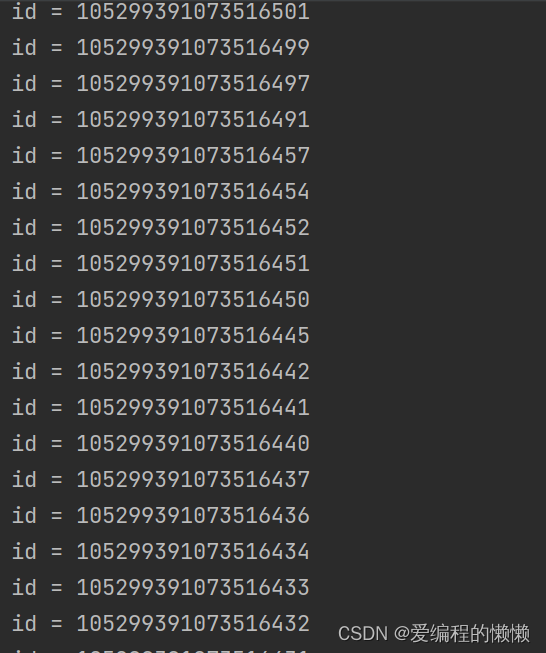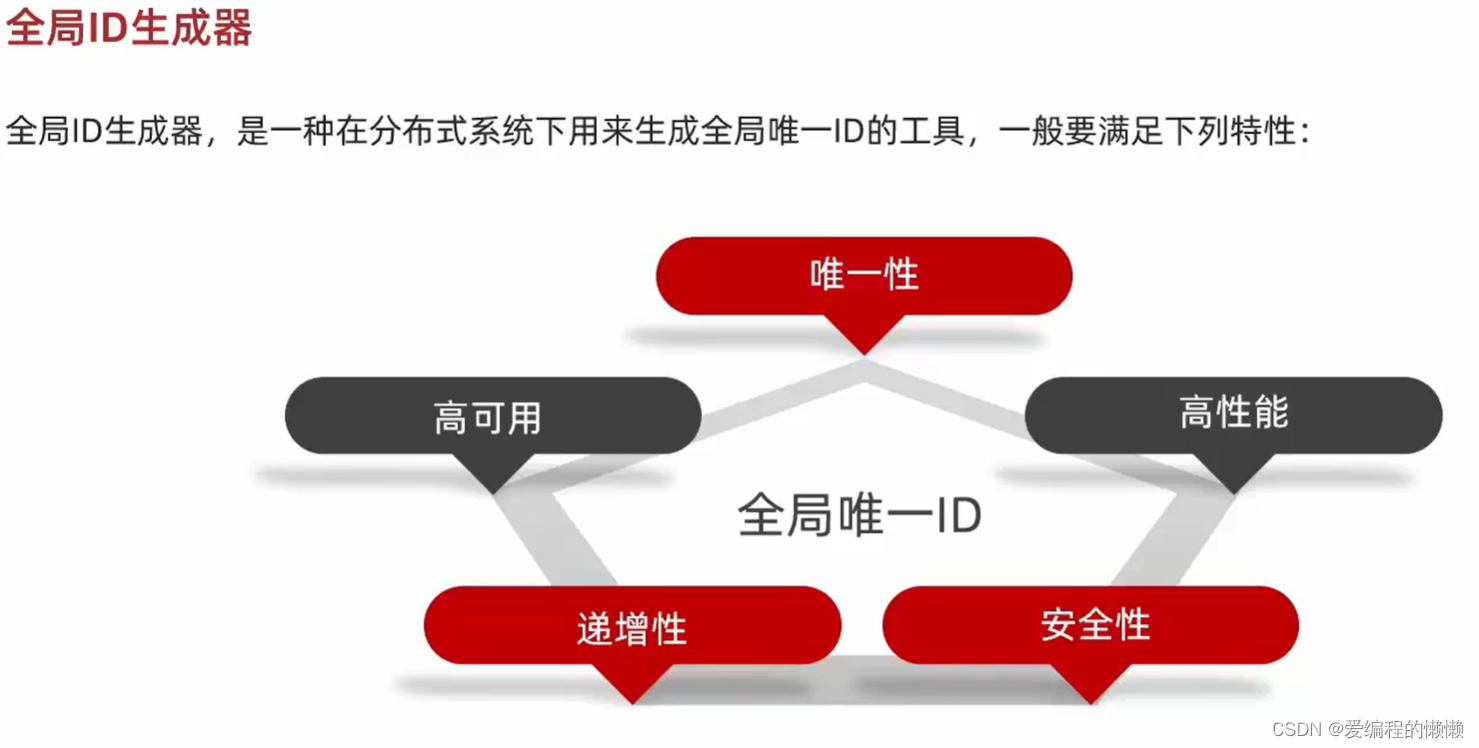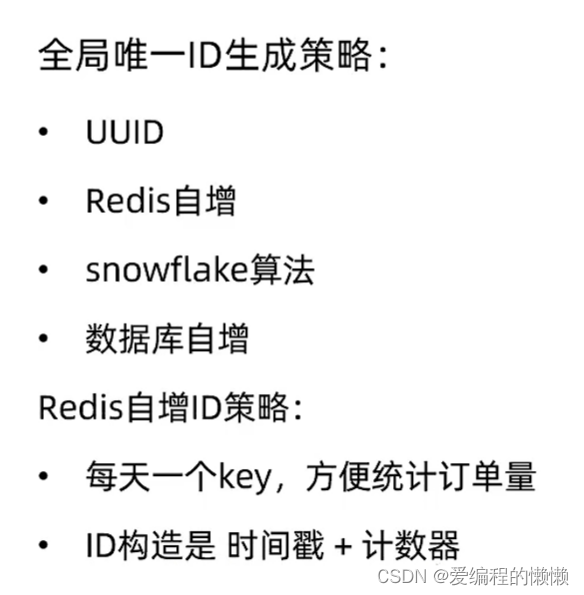阅读量:3
时间戳是指用于表示某一时刻或事件发生时的时间值。它通常是一个数字或字符串,表示从一个特定的起始时间点(通常是某个固定的参考时间,如计算机系统的启动时间、UNIX 时间戳的起始时间等)到当前时刻经过的时间量。
时间戳可以用不同的表示方式,常见的有以下两种:
UNIX 时间戳:UNIX 时间戳是指自 1970 年 1 月 1 日 00:00:00 UTC(协调世界时)以来经过的秒数。它是一种广泛使用的时间戳表示方式,被许多操作系统和编程语言所支持。UNIX 时间戳通常以整数形式表示。
日期时间格式:时间戳也可以以日期时间的格式表示,如 "2023-10-11 15:30:00"。这种表示方式将时间戳转换为易于理解和阅读的日期时间形式,通常包括年、月、日、小时、分钟和秒等信息。
时间戳在计算机科学、数据处理、日志记录等领域广泛应用。它可以用于记录事件发生的顺序、计算时间间隔、进行时间比较和排序等操作。通过时间戳,可以方便地表示和处理时间数据,使得时间相关的操作和分析更加简单和准确。
import org.springframework.beans.factory.annotation.Autowired; import org.springframework.data.redis.core.StringRedisTemplate; import org.springframework.stereotype.Component; import java.time.LocalDateTime; import java.time.ZoneOffset; import java.time.format.DateTimeFormatter; @Component public class RedisIdWorker { /** * 开始时间戳 */ private static final long BEGIN_TIMESTAMP = 1672531200L; /** * 序列号的位数 */ private static final int COUNT_BITS = 32; private StringRedisTemplate stringRedisTemplate; public RedisIdWorker(StringRedisTemplate stringRedisTemplate) { this.stringRedisTemplate = stringRedisTemplate; } public long nextId(String keyPrefix) { // 1.生成时间戳 //获取当前时间 LocalDateTime now = LocalDateTime.now(); //当前的秒数 long nowSecond = now.toEpochSecond(ZoneOffset.UTC); //时间戳 long timestamp = nowSecond - BEGIN_TIMESTAMP; // 2.生成序列号 // 2.1.获取当前日期,精确到天 String date = now.format(DateTimeFormatter.ofPattern("yyyy:MM:dd")); // 2.2.自增长 long count = stringRedisTemplate.opsForValue().increment("icr:" + keyPrefix + ":" + date); // 3.拼接并返回 return timestamp << COUNT_BITS | count; } } 这里,通过main方法生成时间戳的开始的时间,
private static final long BEGIN_TIMESTAMP = 1672531200L; private static final long BEGIN_TIMESTAMP = 1672531200L; public static void main(String[] args) { //of方法指定年月日 LocalDateTime time = LocalDateTime.of(2023, 1, 1, 0, 0, 0); long second = time.toEpochSecond(ZoneOffset.UTC); System.out.println("second=" + second); }进行测试:
import com.hmdp.utils.RedisIdWorker; import org.junit.jupiter.api.Test; import org.springframework.boot.test.context.SpringBootTest; import javax.annotation.Resource; import java.util.concurrent.CountDownLatch; import java.util.concurrent.ExecutorService; import java.util.concurrent.Executors; @SpringBootTest class HmDianPingApplicationTests { @Resource private RedisIdWorker redisIdWorker; //这里生成个线程池 private ExecutorService es= Executors.newFixedThreadPool(500); //测试 @Test void testIdWorker() throws InterruptedException { //这里等结束完进行计时 CountDownLatch latch = new CountDownLatch(300); Runnable task = () -> { for (int i = 0; i < 100; i++) { long id = redisIdWorker.nextId("order"); System.out.println("id = " + id); } latch.countDown(); }; //开始时间 long begin = System.currentTimeMillis(); //这里提交三百次 for (int i = 0; i < 300; i++) { es.submit(task); } latch.await(); //结束时间 long end = System.currentTimeMillis(); System.out.println("time = " + (end - begin)); } } 运行结果:




